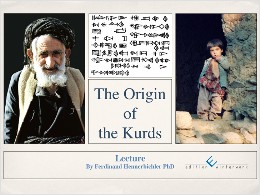Details - fhe
Main menu
- H O M E P A G E
- THE ORIGIN OF THE KURDS 2011
-
CONCLUSIONS
- Prof. Windfuhr
- Prof. Klyosov
- Indigenous Kurds
- REACTIONS
- THE ORIGIN OF KURDS 2012
- DIE HERKUNFT DER KURDEN 2010
- DIE KURDEN 2004
- e-BOOK 2009
- CURRENT EVENTS 2011-2012
-
ARCHIVE
- Gas-Victims 1988
-
PICTURES
-
ANATOLIA
- VAN ANCIENT
- VAN-HAKKARI
-
KURDISTAN IRAQ
- BARZANI IRAN
- TALABANI
- FOLK COSTUMES
- Arbil
- GHN-45
- GAS-VICTIMS
- KORDESTAN IRAN
- ZAGROS
- PROFILES
- JERUSALEM
-
ANATOLIA
- THE FUTURE OF THE KURDS 2021
- KURD NATIONAL IDENTITY 2019
- PRIVATE PHOTOS
- CV English
- Lebenslauf
- COPYRIGHT & IMPRESSUM
Details
Ferdinand Hennerbichler:
The Origin of the Kurds
Short description:
New study, concluding: oldest forefathers of Kurds were mainly not of Iranian origin but descendents of aboriginal Neolithic autochthonous indigenous peoples in Northern Fertile Crescent areas of the Near East and Eurasia B.C.E.
More details:
New inter-
Paperback. First interdisciplinary study composed by the Austrian Historian Ferdinand Hennerbichler (*1946), backed up by leading Iranist Gernot L. Windfuhr, Ann Arbor, Michigan, USA, and renowned DNA Genealogist Anatole A. Klyosov, Newton, Massachusetts, USA, concluding:
Forefathers of Kurds were for the most part ethnically made up of Neolithic aboriginal Northern Fertile Crescent peoples and of Indoiranian speaking emigrating elites from Central Asia. According to recent research of Palaeo/Archaeo-
Previously, Kurds spoke an unknown assumed Proto-
The word Kurd itself could mean mountain people, frequently complemented by various attributive expressions for war-
In conclusion, this new book tries to prove that Kurds are an independent autochthonous people mainly from areas outside of Iran of today. The published results triggered a lively on-

The Origin of the Kurds
Paperback: 390 pp (PPT colour slides), ca. 130 graphs & photos
ISBN: 978-
Copyright: Ferdinand Hennerbichler
Edition: First Edition
Publisher: edition winterwork, Borsdorf, Germany (www.winterwork.de)
Published: August 2011
Language: English
Pages: 390
Maps/Graphs: ca. 130 (colour)
Binding: Paperback
Interior Ink: Full colour
Dimensions: A5 Landscape
OUT OF PRINT. UNDER REVISION.